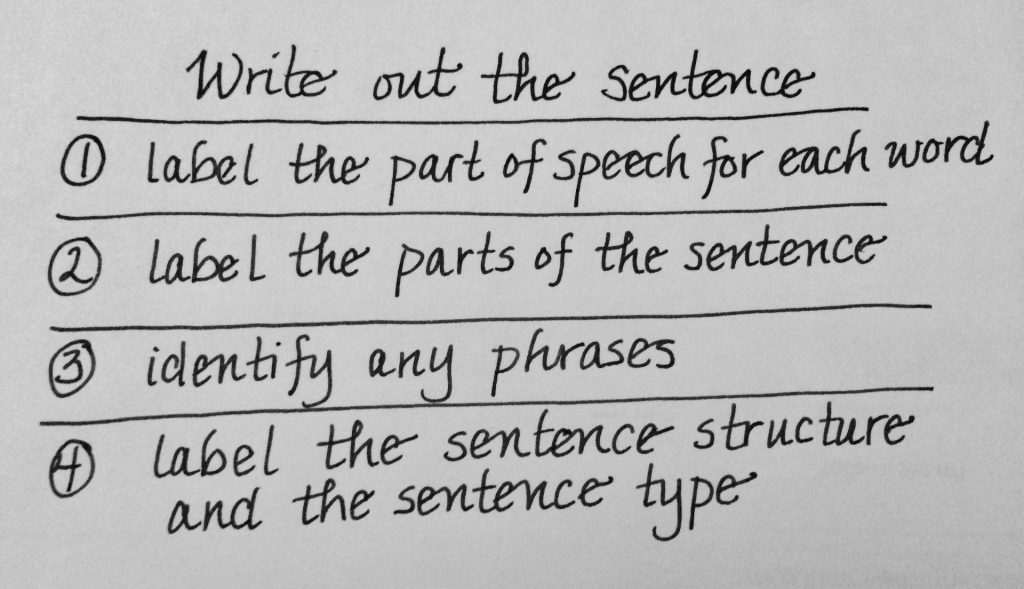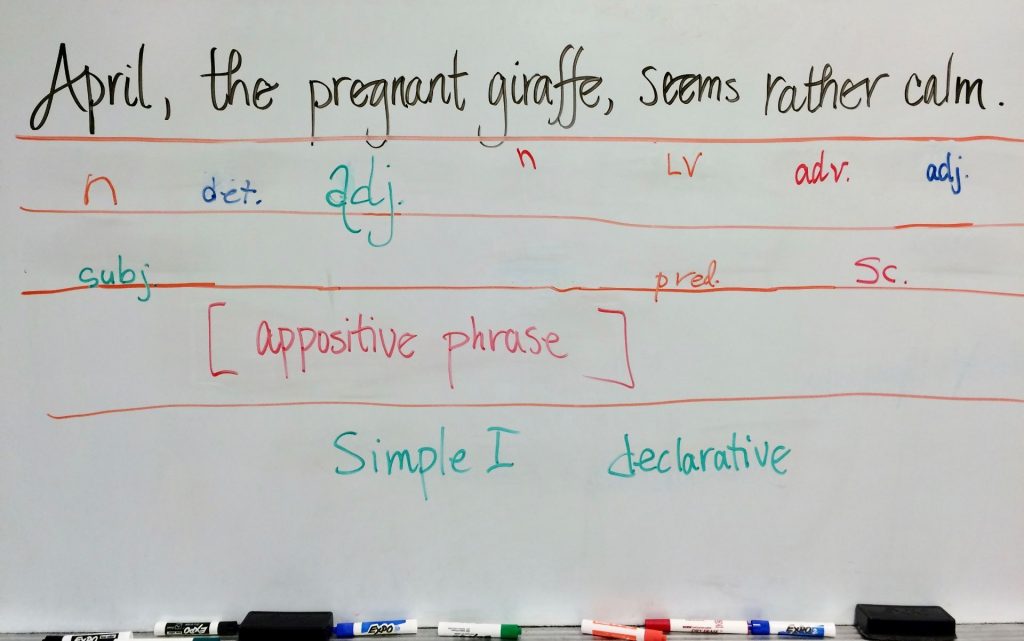For the last three weeks, we’ve gotten busy with two different writing projects that are taking longer than I anticipated. (Isn’t that always the way?) We’ve also been working on word investigations. My students are enjoying these projects. The word investigation-type projects are ongoing. Whenever someone finishes a required project (such as one of the two current writings or their current word investigation) they bring their orthography notebook to my desk and I get them started on a new project. It’s been my way of making good use of every spare moment we have together. What I didn’t realize was that the students actually love knowing there is always a next project, and that they don’t have to wait for everyone in the room to complete a project before they can start a new one.
I love it too. Everyone isn’t looking at the same thing at the same time, so when the students share their findings with the class, we have discussions about conventions and concepts that we circle back to when a group working on a similar investigation is sharing what they found. There has been just enough time between the presentations to let things sink in and in that way, prepare the students to hear similar information and ask great questions.
So we’ve been splitting our time between writing (and all that it encompasses), investigating (looking at words, graphemes and the modern bases that derived from Latin verbs), and moving ahead in our understanding of the hydrosphere (watching and discussing videos). I really thought I was checking off all the boxes for the curriculum I teach. And then several students asked this question:
“Mrs. Steven, do you think we can analyze a sentence today?”
It had been almost two weeks since we last analyzed a sentence. I was really surprised (and quite happy) to hear that it was something the students were missing! So I said, “Sure!” We must keep our students happy, right?
The basic plan I follow for teaching grammar comes from the mind of Michael Clay Thompson. I have been fortunate enough to attend several workshops with him and just about a year ago I took his online Grammar for Adults course. I use his book Grammar Voyage as a reference and have created my own interactive book to use with my students. Using ideas and materials by Michael Clay Thompson has changed the classroom attitude regarding grammar! When the students walk into my room and see a sentence on the board, they immediately start thinking about the overall sentence, the words in it, and the relationships between those words and phrases. Seem hard to believe? Here’s what happened on Thursday.
Some notes before you watch …
I split the video into two parts. Part one focuses on the parts of speech for each word in the sentence. It also focuses on the important parts of the sentence (subject/predicate/direct object, indirect object/subject complement). As you watch, you’ll notice that it’s impossible to identify parts of speech without considering how those words relate to the other words in the sentence. None of the steps in this four level analysis can be done in complete isolation. That wouldn’t make sense. As an example, one of the students points out early in the video that the word “her” can be both a possessive determiner (adjective) and an object pronoun. Brilliant. Then it becomes our job to figure out what its function is in this sentence before we can be satisfied that we have labeled it correctly.
You will notice that I begin by counting the words in the sentence and asking for that many volunteers to come to the board and identify the part of speech for each word. You will also notice that I have an abundance of volunteers! With everyone going to the board at once, no one is singled out as having put any particular identification underneath any particular word. And when they walk away, we have a place to start our discussion. The students can consider the labels placed beneath each word and either support them with evidence or question them. As a class we can figure out not only why we don’t think the current label is correct, but also what we think the correct label is and why. My plan is to turn the thinking and evidence finding back on the students as much as I can. When they are stuck, that is when I step in. You can tell by the types of questions they ask and the number of students participating that they are engaged in this type of analysis.
Here is Part 2. In this video the students identified the prepositional phrases and the sentence structure. You may have noticed that in Part 1 the students identified the sentence structure as complex when they labeled “because” as a conjunction. Now it was time to repeat what was said then and to talk about the difference between clauses and phrases. Then we reviewed the difference between independent and dependent. I love talking about the word sums for those two words and what the base’s denotation reveals to us about what the words mean. According to Etymonline, the base <pend> is from Latin pendere “to hang, cause to hang; weigh.” A few weeks ago when we first talked about dependent and independent clauses, I threw out the words “suspenders”, “suspend”, “pendant”, “perpendicular” and “pendulum.” We talked about how they each share a sense and meaning of “hang.”
Then I drew the T Model (one of Michael Clay Thompson’s brilliant ideas to visually represent a sentence) on the board, and the students told me how to fill it in. Normally the students create their own, but this was the first time we were using the T Model to represent a sentence with two clauses. I wanted to show them how we might show the connection between the two.
I know that there are those out there who insist that grammar is black and white, right or wrong and can only be diagrammed with trees. But in the same way that I am teaching my students to be open in their thinking about words, I am teaching them to be open in their thinking about grammar. As you can see, the students seek to understand the logic of the sentence and how the order of the words can affect that. You could probably hear them flipping through their grammar book (the interactive one I made for them) to find the evidence to back up their hypotheses about a particular word or phrase identification. They are engaged, they are thinking, and they are making connections. The next step will be to have them write their own complex sentences for us to analyze. I anticipate that they will relish doing so!
If you are interested in learning how to implement this kind of analysis with your students, check out the tab at the top of this page that is labeled “Grammar Class”. I may have a schedule up that works for you. If I don’t, please contact me and we can set one up that does!


